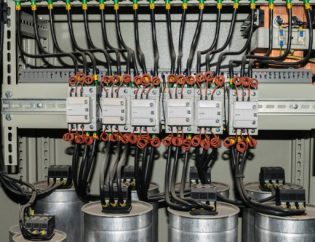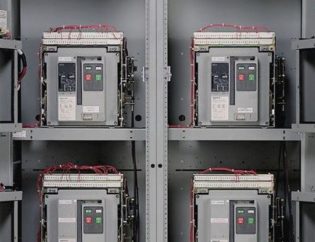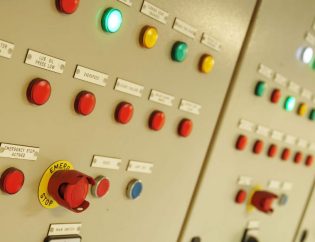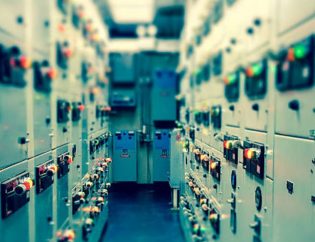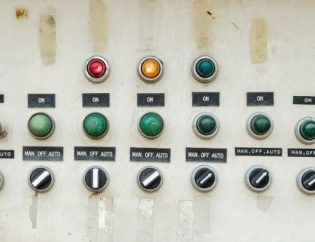Distribution Transformers
Distribution transformers are critical components of power distribution systems. They convert high-voltage electricity to low-voltage electricity for use by consumers. The common failure modes of distribution transformers include insulation, winding, and tap changer failure. Insulation failure can result from moisture ingress, overheating, or aging, which can cause short circuits and reduce the transformer’s efficiency. Winding failure can occur due to mechanical stress, overheating, or insulation failure. Tap changer failure can result from carbonization, dirt accumulation, or improper lubrication.
To prevent transformer failures, regular inspections and maintenance are essential. Insulation resistance tests, transformer oil analysis, and visual inspections can help detect early signs of damage. Regular cleaning and lubrication of tap changers can help prolong their lifespan.
Underground Cables
Underground cables are buried underground, making them less susceptible to damage from weather conditions. However, they are not immune to failure modes, which include insulation failure, cable damage, and water ingress. Insulation failure can occur due to aging, heat, or mechanical stress. Cable damage can result from excavation activities or improper handling during installation. Water ingress can cause insulation failure and corrosion.
To prevent underground cable failures, proper installation techniques should be used to minimize cable damage. Regular inspection of cables using fault locators and cable testing devices can help detect damage. Maintenance of cable joints and terminations can also help reduce the risk of insulation failure.
Electrical equipment failures can be costly and disruptive. Let our team of experienced electricians help you avoid these issues with our comprehensive maintenance and electrical care services. Contact us today to learn more about how we can help.
Overhead Lines
Overhead lines are used to distribute electricity over long distances. They are exposed to the elements, making them more susceptible to damage. Common failure modes of overhead lines include conductor failure, insulator failure, and lightning damage. Conductor failure can result from corrosion, fatigue, or mechanical damage. Insulator failure can occur due to aging, pollution, or mechanical damage. Lightning damage can cause insulation failure, conductor damage, and power outages.
To prevent overhead line failures, regular visual inspections and maintenance are essential. Insulator cleaning, conductor replacement, and lightning protection devices can help reduce the risk of failure.
Circuit Breakers
Circuit breakers are used to protect electrical equipment from overloads and short circuits. Common failure modes of circuit breakers include contact erosion, insulation failure, and mechanical failure. Contact erosion can occur due to arcing, which can reduce the contact surface area and increase resistance. Insulation failure can result from overheating, aging, or mechanical stress. Mechanical failure can result from wear and tear or improper operation.
To prevent circuit breaker failures, regular maintenance, and testing are essential. Insulation resistance testing, contact resistance testing, and visual inspections can help detect early signs of damage. Proper lubrication and adjustment of moving parts can help reduce mechanical failures.
Surge Arresters
Surge arresters are used to protect electrical equipment from transient overvoltages caused by lightning or switching surges. Common failure modes of surge arresters include insulation failure, overvoltage damage, and aging. Insulation failure can result from overheating, aging, or mechanical stress. Overvoltage damage can occur due to high surge currents or voltage transients. Aging can cause the surge arrester to lose its protective capability.
To prevent surge arrester failures, regular maintenance, and testing are essential. Insulation resistance testing, overvoltage testing, and visual inspections can help detect early signs of damage. Replacement of surge arresters after a certain lifespan can help prevent aging-related failures.
Insulators and Bushings
Insulators and bushings are used to insulate electrical equipment and prevent electric current from flowing to the ground. Common failure modes of insulators and bushings include flashover, mechanical failure, and aging. Flashover can occur due to pollution or moisture on the surface of the insulator. Mechanical failure can result from vibration, wind, or ice loads. Aging can cause the insulator to lose its insulation properties.
To prevent insulator and bushing failures, regular cleaning and maintenance are essential. Insulator cleaning, replacement of damaged hardware, and visual inspections can help reduce the risk of flashover and mechanical failure. Replacement of insulators and bushings after a certain lifespan can help prevent aging-related failures.
Conclusion
In conclusion, understanding the common failure modes of electrical equipment in distribution systems is essential to ensure the reliability and safety of power distribution. Regular inspections and maintenance, including cleaning, lubrication, testing, and replacement, can help prevent failures and prolong the lifespan of electrical equipment. By following these prevention and maintenance strategies, we can ensure the continued functioning of power distribution systems and prevent potential hazards to human life and equipment damage.
If you are experiencing issues with your electrical equipment or need assistance with maintenance and inspections, don’t hesitate to contact us at ECSKSA Electrical Care Services. Our team of experienced professionals can provide the necessary support to ensure that your equipment is operating at optimal levels and prevent costly downtime.
Do you have a question in your mind? If so, make sure to fill out the form below!




